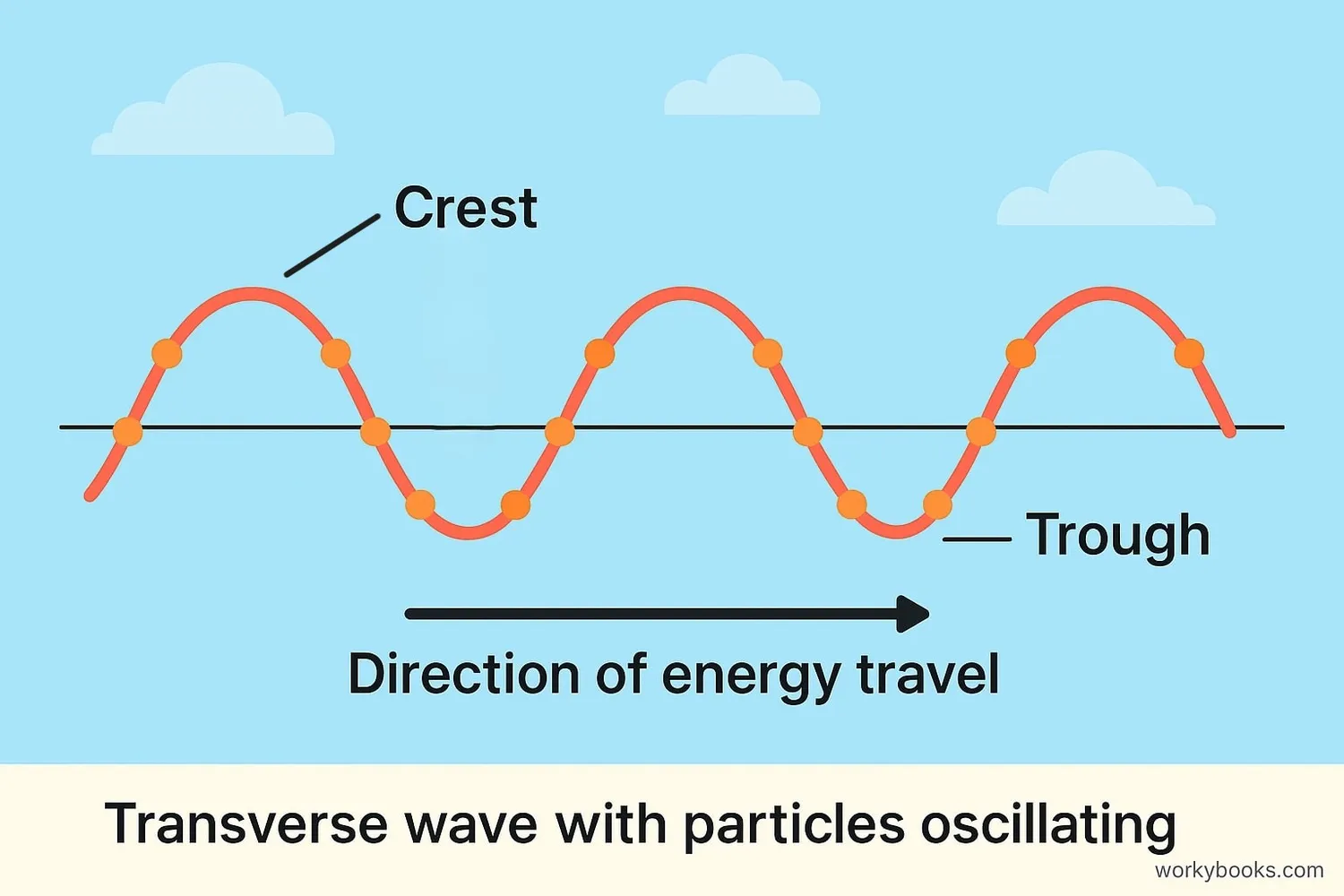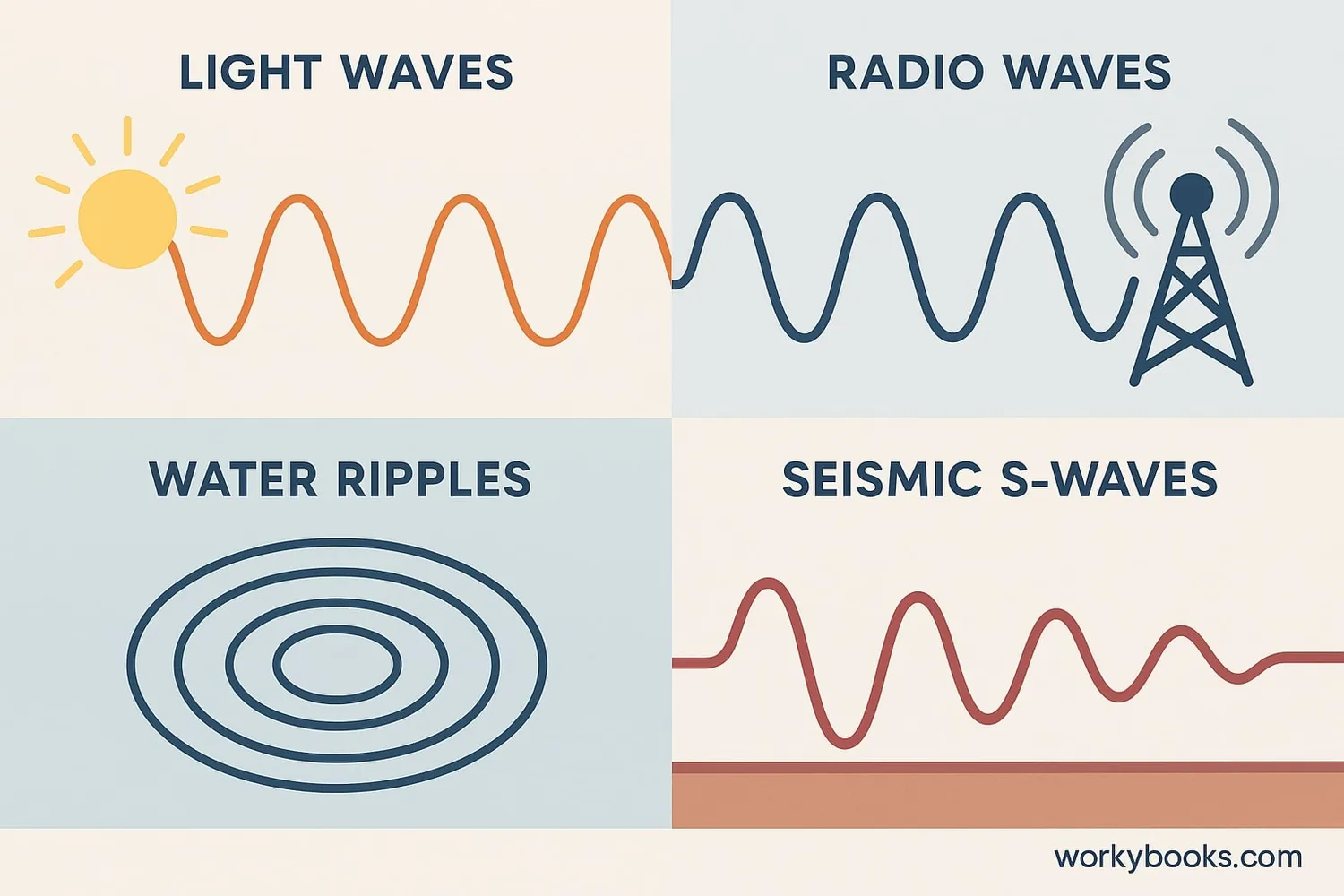Transverse Wave - Definition, Examples, Quiz, FAQ, Trivia
Discover how energy travels through vibrations perpendicular to the wave direction
What is a Transverse Wave?

A transverse wave is a type of wave where the particles of the medium vibrate perpendicular (at right angles) to the direction the wave travels. Imagine shaking a rope up and down - the wave moves horizontally along the rope, but each part of the rope moves vertically.
The key thing to remember is that in transverse waves, the movement of particles is side-to-side or up-and-down, while the energy travels forward. This is different from longitudinal waves where particles move back and forth in the same direction as the wave.
Key Wave Terminology
Crest: The highest point of a transverse wave
Trough: The lowest point of a transverse wave
Oscillation: The back-and-forth movement of particles
Wave Characteristics
Transverse waves have several important characteristics that help us describe and measure them:
Amplitude
The height of the wave from rest position to crest
Wavelength
Distance between two similar points on consecutive waves
Frequency
Number of waves passing a point per second (measured in Hertz)
Period
Time for one complete wave cycle to pass a point
Speed
How fast the wave travels: Speed = Frequency × Wavelength
These properties are mathematically related. For example, frequency and period are inverses:
Frequency = 1/Period
This means that higher frequency waves have shorter periods. Similarly, the wave speed depends on both the frequency and wavelength.
Science Connection
Transverse waves can be represented mathematically using sine or cosine functions, which helps scientists and engineers predict wave behavior.
Real-World Examples

Transverse waves are all around us! Here are some common examples:
Light Waves
Visible light and other electromagnetic radiation
Radio Waves
Used for communication and broadcasting
Water Ripples
Surface waves on water where water moves up and down
Seismic S-Waves
Secondary waves that travel through Earth during earthquakes
String Vibrations
Waves traveling along guitar or violin strings
Electromagnetic waves are special because they don't need a medium to travel through. Light and radio waves can travel through the vacuum of space, while mechanical transverse waves like water ripples require a medium (like water) to propagate.
Did You Know?
The colors we see correspond to different wavelengths of visible light. Red light has the longest wavelength, while violet light has the shortest.
Wave Knowledge Quiz
Test your understanding of transverse waves with this 5-question quiz. Select the best answer for each question.
Frequently Asked Questions
Here are answers to common questions about transverse waves:
Wave Trivia
Discover fascinating facts about transverse waves:
Light Speed
Light waves travel at about 300,000 kilometers per second! At this speed, light could circle the Earth 7.5 times in just one second.
Color Perception
The colors we see are determined by the wavelength of visible light. Red light has the longest wavelength (about 700 nanometers), while violet has the shortest (about 400 nanometers).
Earthquake Waves
During earthquakes, transverse S-waves travel through the Earth's interior but cannot pass through liquid layers, helping scientists map the Earth's core structure.
Space Communication
NASA uses radio waves (a type of transverse wave) to communicate with spacecraft across the solar system. Messages take about 5 hours to reach Pluto!


